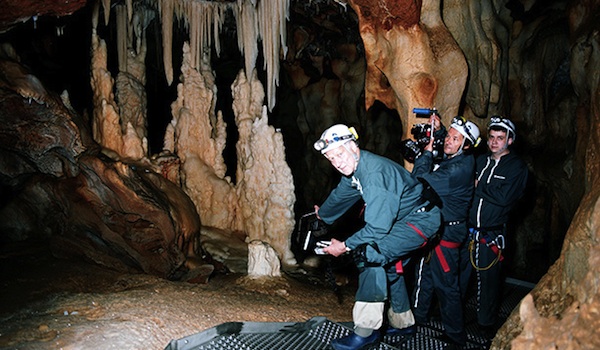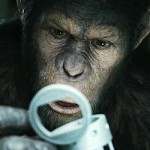Cave of Forgotten Dreams

In Cave of Forgotten Dreams, Werner Herzog—a master documentarian by all accounts—chronicles the discovery and study of the paintings inside the Chauvet Caves of Southern France. They are the oldest known paintings in human history, and seeing them illuminated is simply astonishing. This films pleasures end there, unfortunately, and once the novelty of these images wears off, there’s little of interest going on.
In 1994, an incredible archeological discovery was made: Three explorers found the Chauvet Cave in Southern France. This 1,600-foot area was perfectly sealed off from intruders and the elements for over 30,000 years, and as a result of this natural miracle, the artifacts found inside—including the cave paintings—offer a one-of-a-kind glimpse into our very, very distant past. Alongside Herzog on his journey to document the cave and its paintings (which are now the oldest known art in existence) are a dozen or so scientists—anthropologists, art historians, etc.—who are hoping the cave will hold the key to understanding more about our cultural heritage.
First, the good, because this really is an important documentary and one that everyone should appreciate on some basic level. The paintings are amazing. AMAZING. You’ll be absolutely mesmerized as Herzog’s gritty camera crawl across these amazing images.
I also respect the painstaking work that went into the actual filming of the images. Because the cave is such a new and precious discovery, few are actually granted access to it. Herzog was allowed one camera and three crew members, and the restrictions on equipment made the shoot appear quite taxing. Herzog, never one to back down from something difficult, metaphorically spit in his challengers faces by filming in 3D. I, regrettably, was unable to view it in the extra dimension, but by all accounts, it looks spectacular.
My biggest issue with Cave of Forgotten Dreams is disappointingly fundamental. As far as the paintings go, there’s some magic lost the more you learn about them. Their beauty relies heavily on an element of mystery, and the longer the film goes on, the less mysterious they are. When Herzog starts digging into the people and animals of the cave, we care even less. And by the time we reach the film’s final act, it all feels overdone. It’s like Van Sant’s remake of Psycho—just because something was magical the first time doesn’t mean an identical second version is a good idea. I didn’t need nearly 20 silent minutes of more paintings. The movie should have been much shorter.
Alas, it’s hard for me not to recommend it somewhat because it chronicles such a beautiful and unique piece of human history. It’s not the premise that fails, but rather the execution, which is too jumbled and far too laborious to leave as strong an impact as Herzog is clearly aiming for.













